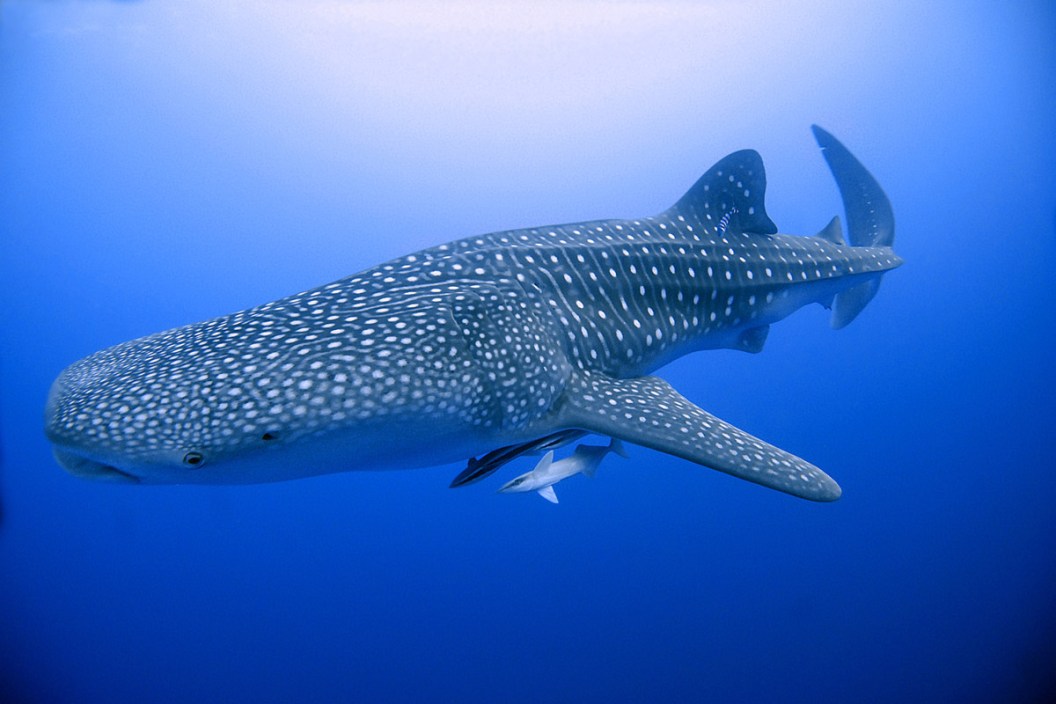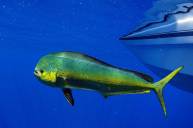There are many questions surrounding the whale shark, beginning with whether it's a whale or a shark.
The whale shark or Rhincodon typus is a massive creature within a small population.
These amazing animals are believed to have an average lifespan of about 70 years, but that could be much, much longer. They're about the same size as a city bus and move just like that guy ahead of you when you're in a hurry.
Oddly enough, however, we don't actually know all that much about them. And, seeing as they're currently listed as an endangered species, they undoubtedly deserve a closer look from all of us.
What is a whale shark?
According to National Geographic, whale sharks aren't considered a predatory animal, but they do have a carnivorous diet, scooping up mostly plankton, but also small fish, squid and shrimp.
Even though they feed more like a whale, they're actually the world's largest fish, and do in fact belong to the shark family, as they have cartilage instead of bone.
Whale sharks have whisker-like sensory organs like catfish have, which protrude from their nostrils. Their backs and sides are a gray-brown with white spots and pale stripes. Their bellies are white, and each whale shark has its own unique color pattern, similar to human fingerprints.
Do whale sharks have teeth?
The simple answer is yes, whale sharks have rows of over 3,000 teeth in their mouths and around their eyes (called "dermal denticles"), but they don't use them to feed.
Unlike other sharks that actively seek, hunt and devour prey by physically grabbing it, the whale shark filters its food by slowly swimming with its giant mouth open (sometimes over five-feet wide) and letting water come in while their bodies filter out food. They then release the water and any debris back into the sea.
Their thousands of tiny teeth are separated into areas on each jaw, but these filter-feeding fish are gentle giants that eat like a sieve, not like a Great White. Their feeding grounds are anywhere they migrate to, but in some areas like Mafia Island, Tanzania they are permanent residents due to the abundance of prey.
How big are they?
Whale sharks are a long-lived species, and can grow up to 40 feet long, but they may only average 18-30 feet in length, while weighing up to 20 tons. The whale shark is the world's largest fish species and the world's largest shark.
Where can you find them?
Whale sharks have been sighted near more than 100 countries across the world, mainly in the warm waters nearest to the equator. Whale sharks are seen and protected in Australia, Honduras, India, the Maldives, Mexico, the Philippines, South Africa, Thailand and the United States.
What is their conservation status?
According to Live Science, experts believe the Indo-Pacific population has reduced by about 63 percent over the past 75 years, and the Atlantic population has reduced by more than 30 percent. As these numbers continue their downward trend, whale sharks are considered endangered.
By accidentally becoming entangled in fishing nets, caught deliberately for their fins and harmed by ingesting plastic pollution, this species has come to the brink of no longer being stable.
Once you've seen one these enormous, gentle creatures swimming in the ocean, you'll experience a Smithsonian moment where you wish you could find more information on them.
Here's to hoping future generations will still be able lay their eyes on the majestic whale shark.
Products featured on Wide Open Spaces are independently selected by our editors. However, when you buy something through our links, we may earn a commission.
Looking for a new way to display those antler sheds? Go to Rack Hub and use the coupon code Craiger. Be sure to follow my webpage, or on Facebook and YouTube.
NEXT: BOWFISHING 101: WHAT YOU NEED TO MASTER THE TECHNIQUE





